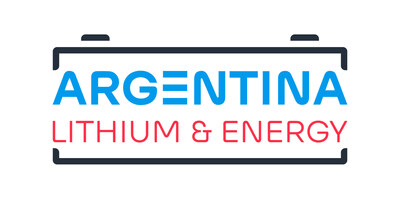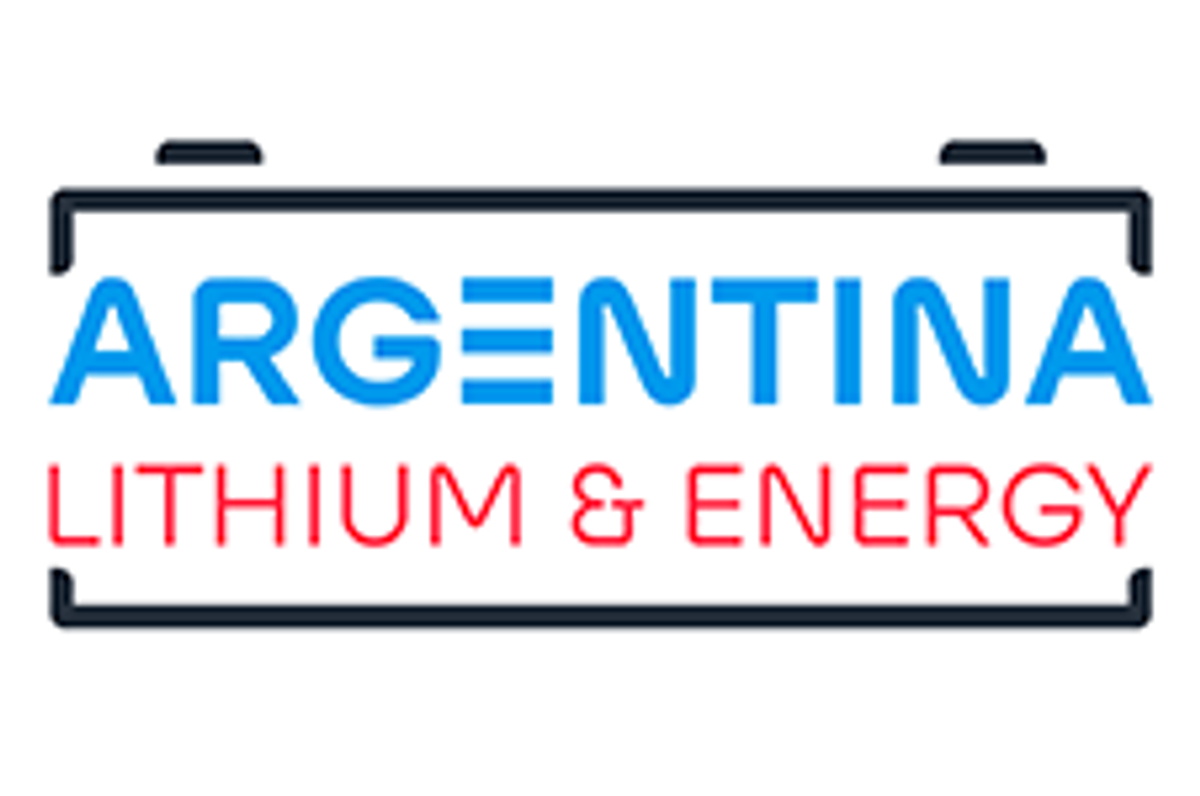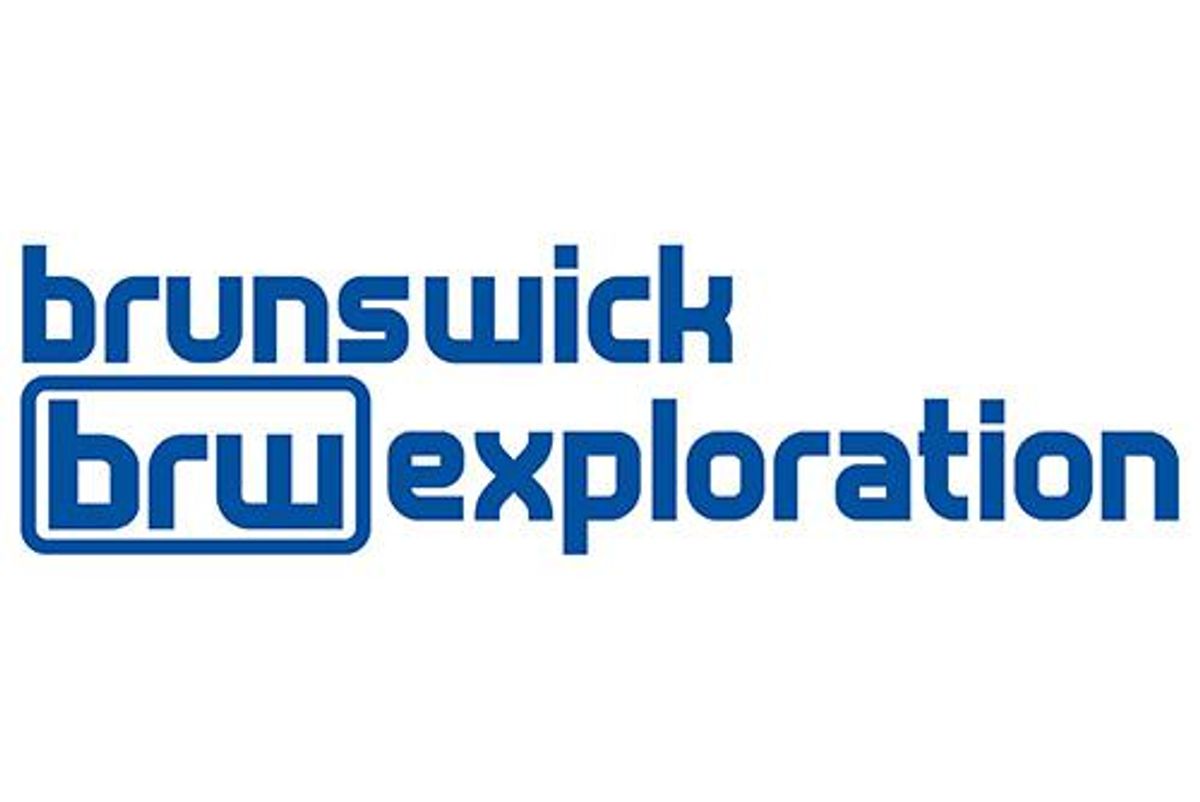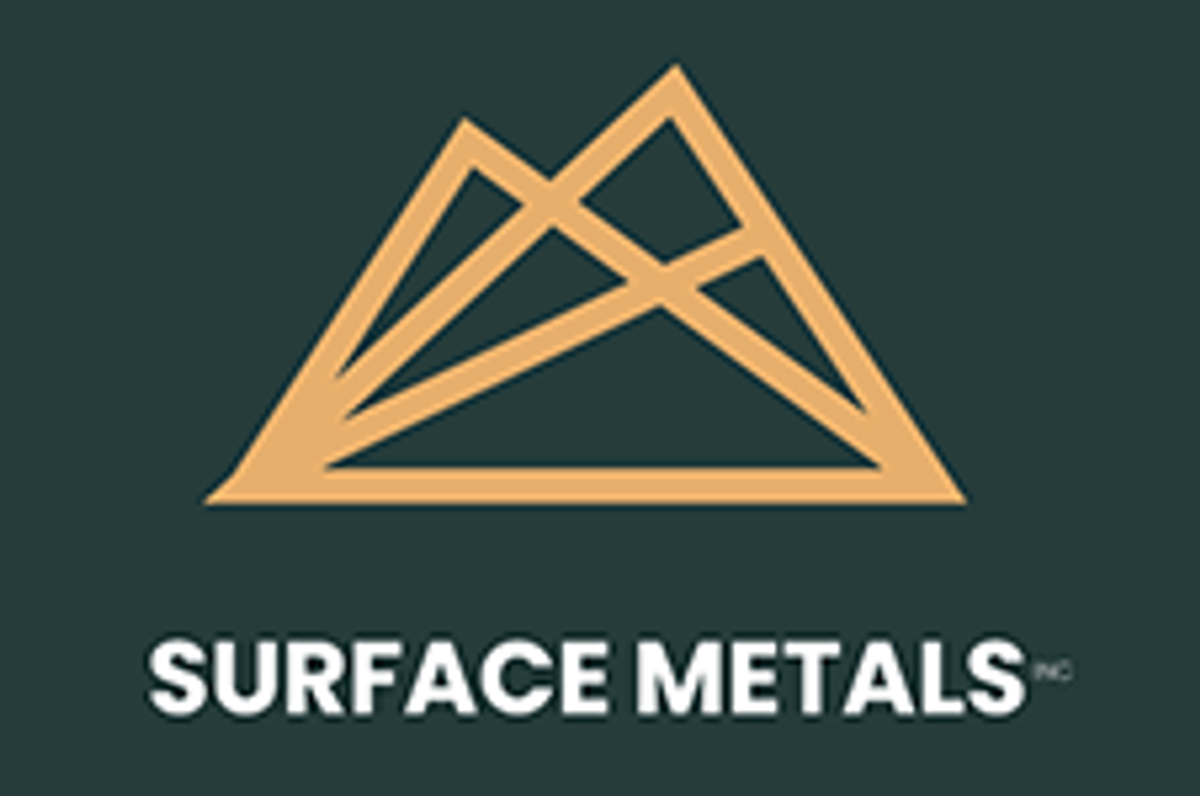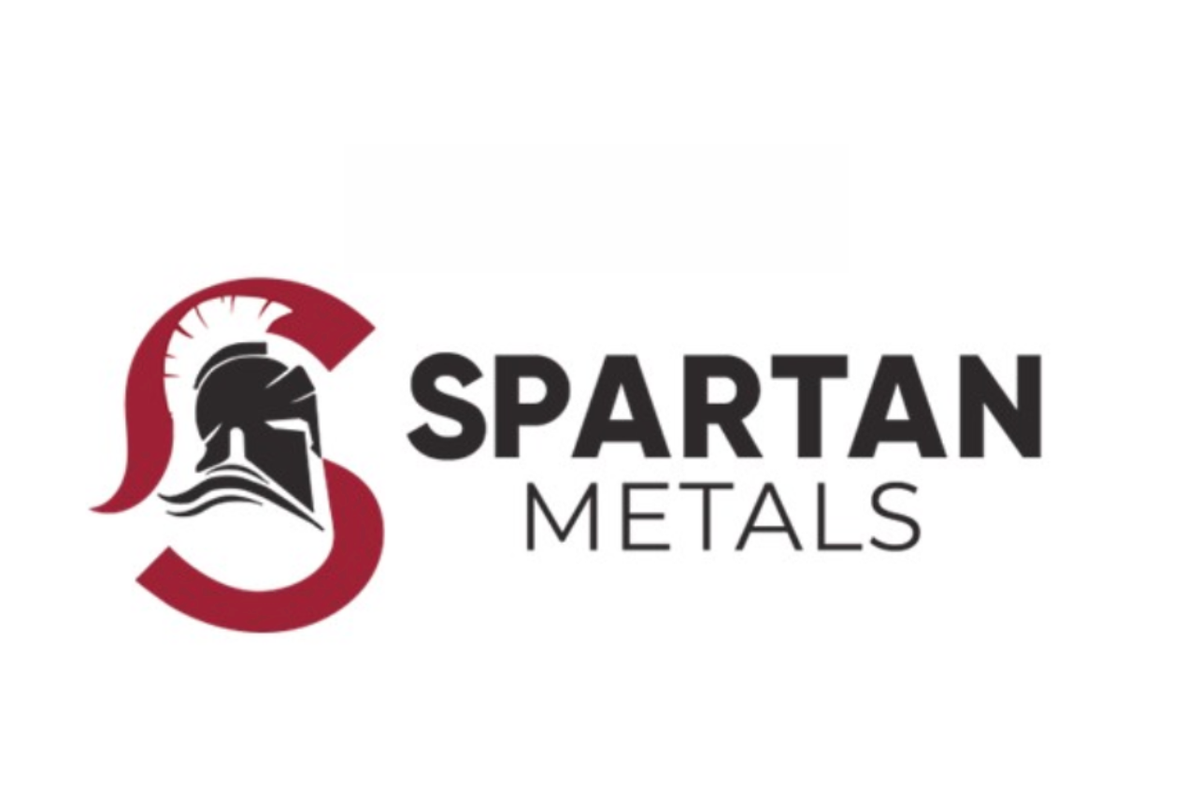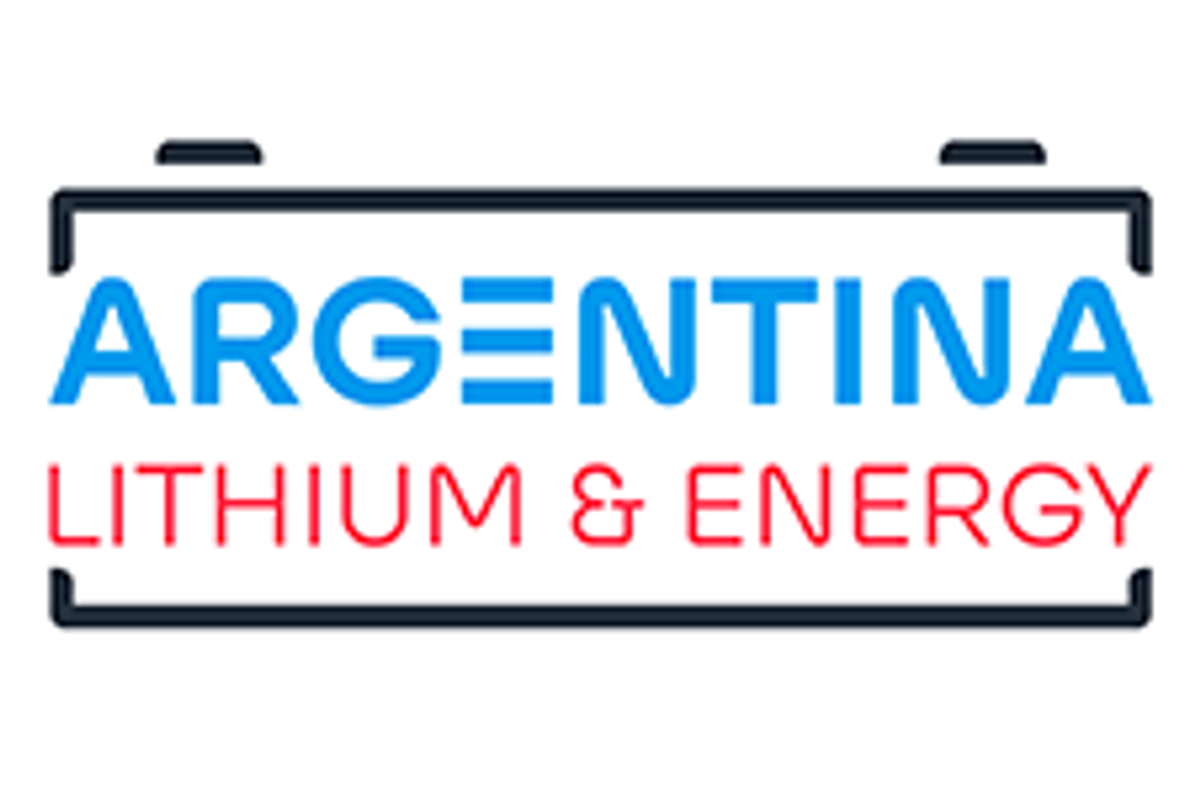
Argentina Lithium & Energy Corp. (TSXV: LIT) (FSE: OAY3) (OTC: PNXLF), ("Argentina Lithium" or the "Company") reports positive lithium brine values at its Rincon West Project in Salta Province Argentina including a 153 m interval ranging from 329 to 393 mgl lithium from the sixth diamond drill hole. The seventh exploration hole is in final steps to completion, with two additional holes planned.
"The new drilling results extend the zone of concentrated lithium brines towards the west and southwest from earlier drill intersections. The remarkable interval from the sixth hole, RW-DDH-006, is our best interval to date, and it is a step-out of 960 m from the prior best intersection reported previously in the fourth hole. With RW-DDH-005, we drilled 1.7 km southwest of the sixth hole, looking for the western limit of the brine zone. These large step-outs demonstrate concentrated lithium brines extend broadly through the core of the property. The remaining three drill holes will be located to further delineate the brine aquifer." stated Miles Rideout , V.P. of Exploration.
The results of the brine analyses, type of sample collected, and the respective intervals from which brine was recovered are shown in Table 1. Drill collar information is presented in Table 2.
The Rincon West Project, located west and north of Rio Tinto's adjacent Rincon Project, covers 3742.8 hectares of the salar basin. Rincon West is currently permitted for up to 9 exploration drill holes. Figure 1 presents a map of the Rincon West property showing the positions of the seven initial exploration holes (see News Releases dated July 13, 2022 , October 3, 2022 and October 25, 2022 ). The map in Figure 1 displays the drill locations overlaid on the conductive zones delineated with TEM geophysics (see May 2, 2022 News Release ; Note: the easternmost property extension was acquired after the completion of the TEM survey and therefore shows no geophysics results).
Table 1: Interval data and results of brines analyses for lithium, potassium, and magnesium for drill holes RW-DDH-005 and RW-DDH-006
| Sample Interval (m) | Sample Method | Li | K | Mg | Density | ||
| From | To | Thickness | | | (mg/litre) | | (g/ml) |
| RW-DDH-005 | | | | | | ||
| 143 | | | Bailer | 12 | 197 | 99 | 1.006 |
| 185 | | | Bailer | 155 | 2432 | 1986 | 1.104 |
| 194 | | | Bailer | 173 | 2686 | 2068 | 1.108 |
| 224 | | | Bailer | 199 | 3243 | 2058 | 1.12 |
| 239 | | | Bailer | 209 | 3423 | 2201 | 1.124 |
| 260 | | | Bailer | 168 | 2623 | 1868 | 1.1 |
| 290 | | | Bailer | 88 | 1323 | 943 | 1.052 |
| 328 | | | Bailer | 104 | 1552 | 1172 | 1.064 |
| 96 | 99.7 | 3.7 | Double packer |
| 41 | 54 | 1.000 |
| 120 | 123.7 | 3.7 | Double packer |
| 207 | 161 | 1.006 |
| 162 | 165.7 | 3.7 | Double packer | 67 | 1137 | 748 | 1.042 |
| 192 | 195.7 | 3.7 | Double packer | 44 | 847 | 512 | 1.032 |
| RW-DDH-006 | | | | | | ||
| 59 | 71 | 12 | Single Packer | 20 | 317 | 278 | 1.01 |
| 71 | 83 | 12 | Single Packer | 38 | 598 | 563 | 1.024 |
| 83 | 95 | 12 | Single Packer | 126 | 1985 | 1370 | 1.078 |
| 119 | 143 | 24 | Single Packer | 233 | 4461 | 2055 | 1.134 |
| 143 | 155 | 12 | Single Packer | 292 | 5484 | 2650 | 1.162 |
| 167 | 179 | 12 | Single Packer | 329 | 6022 | 2892 | 1.178 |
| 179 | 191 | 12 | Single Packer | 348 | 6509 | 3128 | 1.184 |
| 191 | 206 | 15 | Single Packer | 339 | 6473 | 3052 | 1.18 |
| 206 | 218 | 12 | Single Packer | 378 | 7224 | 3411 | 1.194 |
| 218 | 230 | 12 | Single Packer | 379 | 7224 | 3468 | 1.206 |
| 230 | 245 | 15 | Single Packer | 378 | 6895 | 3366 | 1.194 |
| 245 | 257 | 12 | Single Packer | 385 | 7157 | 3451 | 1.21 |
| 257 | 269 | 12 | Single Packer | 393 | 7420 | 3436 | 1.215 |
| 269 | 293 | 24 | Single Packer | 385 | 7500 | 3205 | 1.21 |
| 293 | 308 | 15 | Single Packer | 334 | 6360 | 2743 | 1.18 |
| 303 | 320 | 17 | Single Packer | 336 | 6355 | 2736 | 1.178 |
| *Both drill holes were inclined vertically; the salar strata are believed to be flat lying resulting in reported intervals approximating true thickness. |
| |
Technical Details
Both holes were executed with diamond drilling (HQ-diameter), permitting the extraction of core samples of the salar basin formations, and recovery of brine samples where possible. RW-DDH-005 was drilled between September 26 and October 24, 2022 , stopping at 328.4 metres depth in volcanic units. Lining the hole with 2" diameter PVC filters and tubing was completed on October 26, 2022 .
RW-DDH-006 was drilled between October 27 and November 26, 2022 , stopping at 329.8 metres depth in a metamorphosed sedimentary unit. Final profiling and lining the hole with 2" diameter PVC filters and tubing were completed by December 3, 2022 .
Drilling was carried out by Salta-based AGV Falcon Drilling SRL, under the supervision of Argentina Lithium's geologists.
Table 2: Collar and maximum depth information for RW-DDH-005 and RW-DDH-006
| Hole ID | East | North | Elevation | Azimuth | Dip | Depth |
| | UTM Zone 19S (WGS84) | (m) | (deg.) | (deg.) | (m) | |
| RW-DDH-005 | 680426 | 7336767 | 3808 | n/a | 90 | 328.4 |
| RW-DDH-006 | 681291 | 7338205 | 3764 | n/a | 90 | 329.8 |
LIT's preferred method for brine sampling deploys a 'single packer' sampling unit during drilling. The packer sampling method allows the recovery of brine samples at specific depths while sealing the hole at the top and bottom of the interval. For single packer sampling, an inflatable seal closes the top of the interval; the lower limit of drilling represents the bottom of the interval. In certain instances, double packer sampling is conducted following the completion of drilling. In this case, inflatable seals are employed to close both the top and bottom of the sample interval. The maximum span of double packer sampling is limited to less than 4 m by the height of the drill mast and other equipment limitations.
While drilling RW-DDH-005, every attempt at brine sampling with the single packer apparatus failed to recover significant quantities of brine. Sampling was thus accomplished at intervals during drilling by employing a bailer unit to recover brines from near the bottom of the drilled interval. A limitation of bailer sampling is that the interval is not sealed above, thus mixing with solutions from upper portions of the hole is probable. The site geologists believe the lack of brine recovery during packer sampling was likely related to the depth of the phreatic water table in the hole, identified approximately 72 m below the collar. Apparently the packer airlift system was unable to lift dense brines this height above the phreatic level.
In follow-up sampling, the drill crew was able to recover brines from selected intervals while employing a double packer system.
Sampling with the single packer system was completed without significant difficulty at RW-DDH-006. In this case, the well collar is situated at a lower elevation with a measured phreatic level of 37.6 m .
Observations regarding RW-DDH-005
RW-DDH-005 is the westernmost hole completed to date, and the collar is located at the highest elevation yet tested on this project. The hole tested gravels and volcanic clasts in a sandy matrix to 29 m depth, where ignimbrite was encountered, continuing to 41 m depth. With a short transition, the drill entered medium-to-coarse gray sandstone from approximately 42 m , continuing to 54 m , followed by a 1 m layer of medium-to-fine black sandstone. Coarse gray sandstone was observed from 55 m to 62 m , followed by coarse brown sandy units with layers of sulphates, continuing to 77 m depth. A brecciated sandstone with sandy matrix then extends to 200 m depth. This unit was intensively fractured between 176 m and 197 m depths. Ignimbrite with varying degrees of fracturing was logged between 200 m and 296.5 m depths. The geologic log demonstrates a complex sequence transitioning from ignimbrite to aphanitic volcanics between 296.5 to 306 m depth. The hole was terminated in volcanics at 328.4 m depth.
Observations regarding RW-DDH-006
Breccias and conglomerates with sandy matrices were observed from near-surface to 32 m depth. A sequence of sandy and silty sedimentary units with sulphates followed, ending in a sequence of sandy clays, logged between 47 and 53 m depth. Brown coloured sandstones were observed from 53 m , extending to 86 m depth. From 86 m to 95 m , breccias with quartzite fragments in a sandy matrix were logged. Ortho-quartzite then follows, continuing to 284 m depth, with multiple zones of relative competency interspaced by zones of intensive fracturing. A lithologic change was observed at 284 m , with a silicified sedimentary unit below. As the degree of fracturing reduced with depth, this unit was interpreted as a metamorphosed sedimentary rock. The drill was stopped in this metamorphosed sedimentary unit at 329.8 m depth.
All core samples recovered in drilling were retained for geologic logging. An extensive selection of samples has been sent for brine recovery testing at an independent laboratory. This analysis remains pending.
Analyses and QA/QC
Samples of brine were submitted for analysis to Alex Stewart International Argentina S.A. ("Alex Stewart"), the local subsidiary of Alex Stewart International, an ISO 9001:2008 certified laboratory, with ISO 17025:2005 certification for the analysis of lithium, potassium and other elements. Alex Stewart employed Inductively Coupled Plasma Optical Emission Spectrometry ("ICP-OES") as the analytical technique for the primary constituents of interest, including boron, calcium, potassium, lithium, and magnesium. Measurements in the field included pH, electrical conductivity, temperature and density. The quality of sample analytical results was controlled and assessed with a protocol of blank, duplicate and reference standard samples included within the sample sequence. For the holes RW-DDH-005 and 006 reported herein, the blank (2) and duplicate (3) samples reported within the acceptable range. A single low-grade, medium-grade, and high-grade reference standard sample was included within the submitted samples for each hole. The low-grade reference standard analyses were above 3 standard deviations (SD) with less than 5% relative percent difference (RPD); the medium grade reference standard returned one result above 3 SD and one at 2 SD above the best value with 1.47 and 1.00 RPD, respectively; the high-grade reference standard returned one result less than 3 SD and one within 2 SD of the best value; with low RPD (1.73 and 0.72, respectively).
Rincon West Project
The following summarizes the properties held within the Rincon West Project. Villanoveño II and Demasia Villanoveño II, totaling 2491 hectares, are held under an option whereby the Company can earn a 100% interest, as described in the Company's September 28, 2021 News Release . Argentina Lithium has also purchased the 460.5 hectare Rinconcita II property, adjacent to Villanoveño II (see August 25, 2022 News Release ). The Company entered into an option agreement to earn a 100% interest in four contiguous mine concessions, the "Paso de Sico" option, totalling 791.3 hectares in the northern part of the Salar de Rincon (see October 6 News Release ).
Qualified Person
David Terry , Ph.D., P.Geo. is the Company's Qualified Person as defined in National Instrument 43-101. Dr. Terry is responsible for oversight of the Company's early-stage exploration at the Rincon West property. The disclosure in this news release has been reviewed and approved by Dr. Terry.
About Argentina Lithium
Argentina Lithium & Energy Corp is focused on acquiring high quality lithium projects in Argentina and advancing them toward production in order to meet the growing global demand from the battery sector. The management group has a long history of success in the resource sector of Argentina and has assembled a first-rate team of experts to acquire and advance the best lithium properties in the "Lithium Triangle". The Company is a member of the Grosso Group, a resource management group that has pioneered exploration in Argentina since 1993.
ON BEHALF OF THE BOARD
"Nikolaos Cacos"
_______________________________
Nikolaos Cacos , President, CEO and Director
Neither TSX Venture Exchange nor its Regulation Services Provider (as that term is defined in policies of the TSX Venture Exchange) accepts responsibility for the adequacy or accuracy of this release.
This news release may contain forward-looking statements. Forward-looking statements address future events and conditions and therefore involve inherent risks and uncertainties. All statements, other than statements of historical fact, that address activities, events or developments the Company believes, expects or anticipates will or may occur in the future, including, without limitation, statements about the Company's plans for its mineral properties; the Company's business strategy, plans and outlooks; the future financial or operating performance of the Company; and future exploration and operating plans are forward-looking statements.
Forward-looking statements are subject to a number of risks and uncertainties that may cause the actual results of the Company to differ materially from those discussed in the forward-looking statements and, even if such actual results are realized or substantially realized, there can be no assurance that they will have the expected consequences to, or effects on, the Company. Factors that could cause actual results or events to differ materially from current expectations include, among other things: the impact of COVID-19; risks and uncertainties related to the ability to obtain, amend, or maintain licenses, permits, or surface rights; risks associated with technical difficulties in connection with mining activities; and the possibility that future exploration, development or mining results will not be consistent with the Company's expectations. Actual results may differ materially from those currently anticipated in such statements. Readers are encouraged to refer to the Company's public disclosure documents for a more detailed discussion of factors that may impact expected future results. The Company undertakes no obligation to publicly update or revise any forward-looking statements, unless required pursuant to applicable laws. We advise U.S. investors that the SEC's mining guidelines strictly prohibit information of this type in documents filed with the SEC. U.S. investors are cautioned that mineral deposits on adjacent properties are not indicative of mineral deposits on our properties.
![]() View original content to download multimedia: https://www.prnewswire.com/news-releases/argentina-lithium-drilling-extends-lithium-brine-zone-at-rincon-west-301731403.html
View original content to download multimedia: https://www.prnewswire.com/news-releases/argentina-lithium-drilling-extends-lithium-brine-zone-at-rincon-west-301731403.html
SOURCE Argentina Lithium & Energy Corp.

![]() View original content to download multimedia: https://www.newswire.ca/en/releases/archive/January2023/26/c6445.html
View original content to download multimedia: https://www.newswire.ca/en/releases/archive/January2023/26/c6445.html
